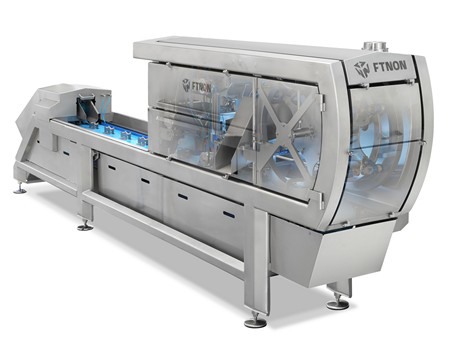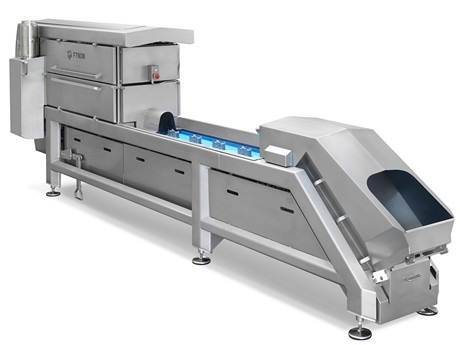Last year, the new head office of Düpmann GmbH & Co. KG arose in Borgholzhausen, Germany. The company supplies the German food industry with various processed vegetables, including peeled, and cut if so desired, onions, as well as bell peppers, carrots, courgettes, cucumbers and leek, in cubes, slices, discs or strips. They also produce vegetable mixes, and garlic and vegetable purée. Peeled garlic and frozen vegetables are also part of their assortment.

The current production location Marienfeld is nearly 150 years old. The Düpmann family has always been connected to the agricultural sector in one way or another. That’s why they started peeling onions in the early 1970s. In the 1990s, processed bell pepper was added to that, and their assortment has steadily grown since then. After the last new building was erected in 2009, it soon became apparent that the maximum capacity had been reached in Marienfeld, and that a new expansion was necessary. After some deliberation it was decided to build a new facility in Borgholzhausen, although the production location in Marienfeld also remains part of the company.
New onion peeler
A new building also requires an expansion of the machinery. Heinz Düpmann: “We process, among other products, Spanish onions in larger sizes. These are mostly in demand in summer, when meat processors use them in barbecue skewers. Our current machines can easily peel the onions sized 70 to 90, but we bought a new machine for these large sizes. We chose an MOP-200 of JBT FTNON. In recent years, we had ten employees manually peeling the onions during the high season from March to August, now we just need two operators to put the onions in the right position and to inspect the peeled product.” A conveyor belt places each individual onion in a separate holder, or pocket. The operator positions the onion in such a way that head and tail can be cut off. The skin is then sliced by four blades and clasped between two arms. The onion is rotated and sliced across its diameter. The skin is blown off using compressed air. Opening and closing the machine’s total of six arms is done using magnetic fields. This is a technique FTNON developed in 2011, and it’s been used in the MOP-200 since 2017. Finally, a worker inspects the peeled product for any leftover skin and damages.

Compact and hygienic
Besides saving in workers, hygiene was an important reason to buy the machine for the Düpmann company. According to Heinz Düpmann, the product no longer passes from hand to hand, and the machine is easy to clean. Lars Heuvelmans of JBT FTNON confirms this. “Most existing machines require a lot of parts to peel onions. The machine we developed is much more compact with 60% fewer parts. The machine uses no chains and everything is made from stainless steel. The machine is constructed modularly, so that all parts can be cleaned individually. The parts that pick up the onions, rotate it to remove the skin and put it down again, often contain springs and drive belts. We replaced these with permanent magnets. A major advantage of this is that the magnets are low-maintenance, but installation remains the same.”
